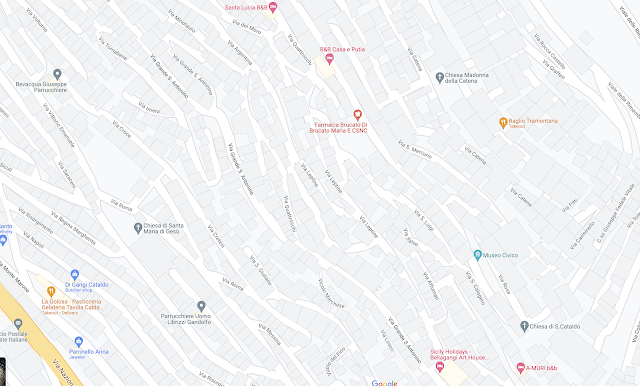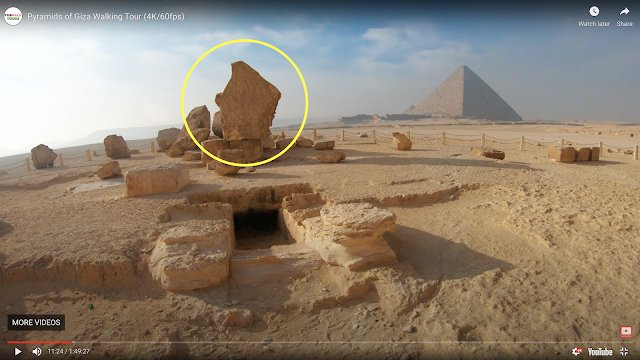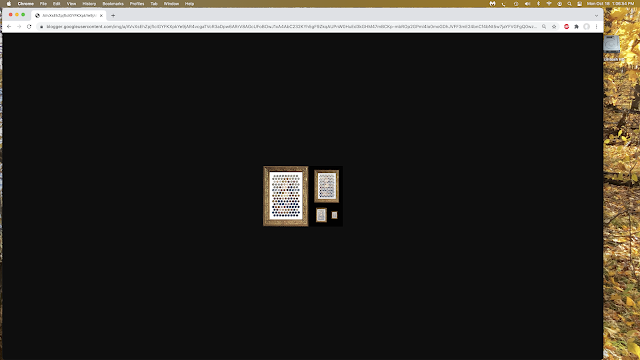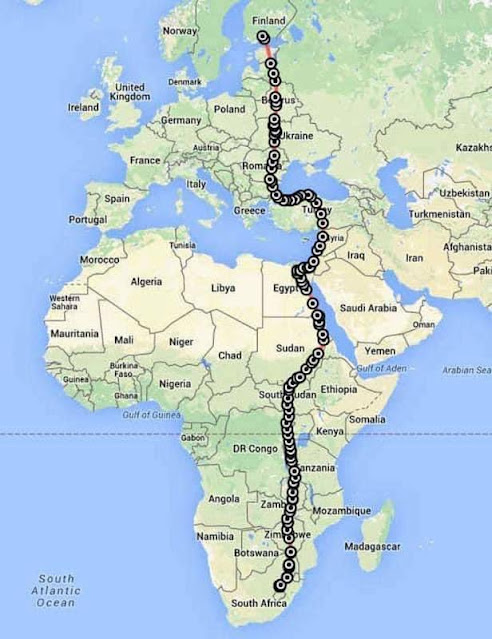31 October 2021
29 October 2021
That's not dew on the leaf. It's guttation.
Guttation is the exudation of drops of xylem sap on the tips or edges of leaves of some vascular plants, such as grasses, and a number of fungi. Guttation (from Latin gutta drop) is not to be confused with dew, which condenses from the atmosphere onto the plant surface. Guttation generally happens during the night time.At night, transpiration usually does not occur, because most plants have their stomata closed. When there is a high soil moisture level, water will enter plant roots, because the water potential of the roots is lower than in the soil solution. The water will accumulate in the plant, creating a slight root pressure. The root pressure forces some water to exude through special leaf tip or edge structures, hydathodes or water glands, forming drops. Root pressure provides the impetus for this flow, rather than transpirational pull. Guttation is most noticeable when transpiration is suppressed and the relative humidity is high, such as during the night.
A one-hour helicopter flight over Antarctica
The 2-million-year evolution of the genus Homo
Recent developments in the field of palaeoanthropology necessitate the suppression of two hominin taxa and the introduction of a new species of hominins to help resolve the current nebulous state of Middle Pleistocene (Chibanian) hominin taxonomy. In particular, the poorly defined and variably understood hominin taxa Homo heidelbergensis (both sensu stricto and sensu lato) and Homo rhodesiensis need to be abandoned as they fail to reflect the full range of hominin variability in the Middle Pleistocene. Instead, we propose: (1) introduction of a new taxon, Homo bodoensis sp. nov., as an early Middle Pleistocene ancestor of the Homo sapiens lineage, with a pan-African distribution that extends into the eastern Mediterranean (Southeast Europe and the Levant); (2) that many of the fossils from Western Europe (e.g. Sima de los Huesos) currently assigned to H. heidelbergensis s.s. be reassigned to Homo neanderthalensis to reflect the early appearance of Neanderthal derived traits in the Middle Pleistocene in the region; and (3) that the Middle Pleistocene Asian fossils, particularly from China, likely represent a different lineage altogether.
Ötzi's clothing
A study newly published in Nature's Scientific Reports uses mitochondrial DNA analysis to determine the animal sources of the various leathers in Otzi's clothing.
Results indicate that the majority of the samples originate from domestic ungulate species (cattle, sheep and goat), whose recovered haplogroups are now at high frequency in today’s domestic populations. Intriguingly, the hat and quiver samples were produced from wild species, brown bear and roe deer respectively...Photo credit South Tyrol Museum of Archaeology/A. Ochsenreiter, via the Washington Post.
The Iceman’s garments and quiver are from an assemblage of at least five different species of animal. The coat alone was a combination of at least four hides and two species: goat and sheep. This result may indicate a haphazard stitching together of clothing based upon materials that were available to the Iceman, as ancient rudimentary leather is posited to rapidly deteriorate after manufacture. However, the leggings were composed of goat leather, which was also used in the manufacture of a 4,500-year-old leggings from Schnidejoch, Switzerland. This result lends support to the idea that Copper Age individuals in the Alpine region selected species for specific attributes when manufacturing clothing. This may also indicate a functional choice of material based on flexibility or insulating potential.
A "2X4" is not 2" x 4" in size
In the Americas, two-bys (2×4s, 2×6s, 2×8s, 2×10s, and 2×12s), named for traditional board thickness in inches, along with the 4×4 (89 mm × 89 mm), are common lumber sizes used in modern construction. They are the basic building blocks for such common structures as balloon-frame or platform-frame housing. Dimensional lumber made from softwood is typically used for construction, while hardwood boards are more commonly used for making cabinets or furniture.Lumber's nominal dimensions are larger than the actual standard dimensions of finished lumber. Historically, the nominal dimensions were the size of the green (not dried), rough (unfinished) boards that eventually became smaller finished lumber through drying and planing (to smooth the wood). Today, the standards specify the final finished dimensions and the mill cuts the logs to whatever size it needs to achieve those final dimensions. Typically, that rough cut is smaller than the nominal dimensions because modern technology makes it possible to use the logs more efficiently. For example, a "2×4" board historically started out as a green, rough board actually 2 by 4 inches (51 mm × 102 mm). After drying and planing, it would be smaller by a nonstandard amount. Today, a "2×4" board starts out as something smaller than 2 inches by 4 inches and not specified by standards, and after drying and planing is minimally 1+1⁄2 by 3+1⁄2 inches (38 mm × 89 mm).
"How frightened you are..."
"Her husband’s custom was to recount his day to her in detail: what he’d done at the office, how much (or how little) he’d accomplished, with whom he’d had meetings, or met for lunch, or spoken on the phone. There were ongoing narratives—names that had become familiar to her over the years, though she’d met only a few of her husband’s colleagues; rivalries, alliances, sudden rifts, feuds, tragic developments, startling consequences. In these accounts, Allan was invariably the protagonist: the center of the narrative.
Though Abigail did not always listen closely to his reports, she took comfort in hearing them. Impossible not to feel a wave of tenderness for the man who, through the years, from the very start of their marriage, solemnly recited to his wife the banalities of his life, as a child might recite the events of his life to his mother, secure in the knowledge that anything he did, anything he said, because it was his, would be prized by her if not by anyone else.
In exchange, Abigail told her husband of her day, more briefly. For she was the wife, and she had a dread of boring him.
As a young woman, indeed as a girl, Abigail had learned to shape herself to fit the expectations of others. If there was a singular narrative of her life it had the contours of a supple, sinuous snake, ever delighting in its contortions and in the shimmering, iridescent camouflage-skin that contained it.
Even as a mother! Perhaps as a mother most of all.
Crucial not to let them know. How frightened you are, how little you understand. How astonished you are that they have survived.
25 October 2021
Horatio Nelson's lethal wound
At a quarter-past one in the afternoon, Hardy realised that Nelson was not by his side. He turned to see Nelson kneeling on the deck, supporting himself with his hand, before falling onto his side. Hardy rushed to him, at which point, Nelson smiled:"Hardy, I do believe they have done it at last .... my backbone is shot through."He had been hit by a musket ball, fired from the mizzen-top of Redoutable, at a range of 50 feet (15 m). The ball entered his left shoulder, passed through a lung, then his spine at the sixth and seventh thoracic vertebrae, and lodged two inches (5 cm) below his right shoulder blade, in the muscles of his back. Nelson was carried below to the cockpit, by sergeant major of marines Robert Adair, and two seamen. As he was being carried down, he asked them to pause while he gave advice to a midshipman on the handling of the tiller. He then draped a handkerchief over his face to avoid causing alarm amongst the crew. He was taken to ship surgeon William Beatty, telling him:"You can do nothing for me. I have but a short time to live. My back is shot through."
A satisfying video
Red and clear obsidian
Pure obsidian is usually dark in appearance, though the color varies depending on the impurities present. Iron and other transition elements may give the obsidian a dark brown to black color. Most black obsidians contain nanoinclusions of magnetite, an iron oxide. Very few samples of obsidian are nearly colorless. In some stones, the inclusion of small, white, radially clustered crystals (spherulites) of the mineral cristobalite in the black glass produce a blotchy or snowflake pattern (snowflake obsidian). Obsidian may contain patterns of gas bubbles remaining from the lava flow, aligned along layers created as the molten rock was flowing before being cooled. These bubbles can produce interesting effects such as a golden sheen (sheen obsidian). An iridescent, rainbow-like sheen (fire obsidian) is caused by inclusions of magnetite nanoparticles creating thin-film interference. Colorful, striped obsidian (rainbow obsidian) from Mexico contains oriented nanorods of hedenbergite, which cause the rainbow striping effects by thin-film interference.
JFK assassination records not being released yet
Two nephews of John F. Kennedy are calling on the Biden administration to release the final trove of secret documents on the 1963 assassination of the former president.The records were scheduled to be made public Tuesday, but the White House announced late Friday night that it would delay their publication until at least Dec. 15 — and perhaps longer if President Joe Biden determines it’s in the nation’s best interest to keep them confidential.“It’s an outrage. It’s an outrage against American democracy. We’re not supposed to have secret governments within the government,” Robert F. Kennedy Jr. told POLITICO. “How the hell is it 58 years later, and what in the world could justify not releasing these documents?”..Biden’s decision to continue Trump’s policy of shielding the records came as a surprise to historians and experts on the assassination because he had served in the U.S. Senate when the John F. Kennedy Assassination Records Collection Act of 1992 passed unanimously in Congress. That act, passed in response to questions raised by the 1991 Oliver Stone film “JFK,” set up an independent review board to collect all government files that might have bearing on the assassination and make them public. Most records were released between 1994 and 1998. Only the most sensitive classified documents remain confidential...The White House declined to comment on the record, issuing a background statement saying that “the National Archives advised that their review of classified material was severely hampered by COVID-19 since classified material cannot be reviewed remotely and asked for more time.” The coronavirus first hit the U.S. in early 2020, more than 27 years after the JFK Records Act passed and more than 56 years after Kennedy was shot on Nov. 22, 1963, in Dallas.
Twins from the Gaza strip
As you stand in front of two small angels, you are drawn to the beautiful and even extravagant features of the beauty of the divine creation, and you do not believe when you learn the relationship between them.The twins, Baraa and Israa, from the Gaza Strip, suffered from people's looks and questions, due to the different color of their skin.The father of the twins, Etaf Al-Habal, said that the difference in the color of their skin was shocking to him, so he thought that Esraa had been replaced in the delivery room, until his memory came back to his dark-skinned brother as his uncle, who is blond as his mother, adding that the family carries genetic genes for brunettes. And blondes.He added, "When I saw them for the first time, I thought that they were not sisters, and that they were switched in the delivery room until I was sure that my wife was the only one to give birth on that day, and there is no one else in the hospital."Al-Habl stressed that the difference in the skin color of both Baraa and Israa is mainly caused by the genetics of their ancestors, in addition to the fact that they were in two separate sacs inside their mother’s womb, and that the percentage of blonde skin is high in their family compared to brown skin.The two girls, Esraa and Baraa, emphasized that despite their different skin color, they are related to each other, and they behave in the same manner and wear the same clothes, even as they are similar in the way they sleep and walk.Al-Habl said that the difference remains in academic achievement, as the twins are among the top achievers in school. However, Israa was a year behind Baraa because she was hit by three shrapnel in her head, neck and foot, and although she has recovered, she still suffers from foot pain as she is receiving treatment. periodically.
19 October 2021
John Steinbeck's "slut" explained
As reported in The Guardian:
The word “slut” scrawled at the end of the manuscript for John Steinbeck’s seminal novel The Grapes of Wrath may have been explained, thanks to a handful of Swedish academics.The Grapes of Wrath was written by Steinbeck in a frenzy of creativity in under 100 days, between May and October 1938. Independent press SP Books released the first ever facsimile of the handwritten manuscript last week, showing Steinbeck’s increasingly tiny handwriting, his swear words, which were excised from the final novel – and a faint “slut”, written in red, at its conclusion.Welcoming the manuscript’s release last week, Steinbeck expert Susan Shillinglaw described the word “slut” as “an archival mystery”, pondering whether Steinbeck’s wife Carol might have “playfully” written it in red and then erased it, or if someone in the University of Virginia archives had defaced the manuscript. “I suspect the latter, but we’ll never know for sure,” she told the Guardian last week.But after the Guardian article about the facsimile was published, a handful of Swedish scholars got in touch with Shillinglaw, pointing out the meaning of “slut” in Swedish.“It is the Swedish expression for ‘the end’, used on the last page of all kinds of books, especially children’s books,” wrote Jonathan Shaheen, an academic at Stockholm University, to Shillinglaw. “A well placed ‘slut’ always makes me laugh.
“When the matter was brought to my attention by the University of Virginia archivist, I had no idea when the word was added to the manuscript. I thought perhaps someone was objecting to the final scene, and that the word referred to Rose of Sharon’s actions, offering her breast to a dying man,” she said. “I consulted with Steinbeck scholar Bob DeMott. He had no idea about what the light ‘slut’ at the end meant or who might have written it – a visitor to special collections, perhaps? But when I wrote Bob this week, he said, ‘Mystery solved.’ I felt the same way.”
The Sicilian town of Gangi - updated with video
Immense polycystic kidneys
American ragpickers
18 October 2021
A merkin salesman
I don't know why this happens
A walking tour of the Giza Plateau
La Palma home with mountain view
I seem to be encountering problems embedding images - (update: solved, I think)
I just noticed the problem today; not sure how long it has been going on.
Normally (historically) every image I embed has been clickable and enlarges to supersize. Now I'm seeing photos that not only fail to enlarge, but even appear smaller when one clicks on them.
The post below this one has a NASA image composed of photos of the moon. When I click on the photo, instead of enlarging to view details, I see this tiny image:
I don't know WTF is going on - whether the problem is with my computer or Blogspot or what. Bear with me. I'll try to sort this out (later).
Addendum: A comment by reader Kniffler seems to have steered me to the source of the problem, which seems to have been on my end (the browser opening images at the incorrect magnification). If so, it will not have affected your viewing.
As Gilda Radner's Emily Litella used to say on Laugh-In... "Never mind."
The "Moona Lisa"
Only natural colors of the Moon in planet Earth's sky appear in this creative visual presentation. Arranged as pixels in a framed image, the lunar disks were photographed at different times. Their varying hues are ultimately due to reflected sunlight affected by changing atmospheric conditions and the alignment geometry of Moon, Earth, and Sun. Here, the darkest lunar disks are the colors of earthshine. A description of earthshine, in terms of sunlight reflected by Earth's oceans illuminating the Moon's dark surface, was written over 500 years ago by Leonardo da Vinci.But stand farther back from your monitor or just shift your gaze to the smaller versions of the image. You might also see one of da Vinci's most famous works of art.
16 October 2021
Mandarin duck
Photo credit to Kjetil Salomonsen, a birder from Bergen (Norway).This little Mandarin duck was the attraction of the month here in Bergen, mostly because he is a juvenile that was spotted alone in a small pond with still his immature plumage on. Between early October and last weekend, people have gone there often and were able to see the progression of his colors from immature to a vibrant grown male.For reference, here is the same individual that I captured about 10 days prior, look at the difference in colors not even two weeks can make!
Reposted to add this photo of another Mandarin duck (via):
15 October 2021
Superb sand art in a bottle
Andrew Clemens (1857 – 1894) was a sand artist from Iowa in the United States. Clemens formed his pictures by compressing natural colored sands inside chemists' jars to create his works of art.He would collect naturally colored grains of sand from an area in Pikes Peak State Park known as Pictured Rocks. At Pictured Rocks, the basal portion of the sandstone near the Sand Cave is naturally colored by iron and mineral staining. Clemens separated the sand grains into piles, by color, and used them to form the basis for his art...To create his art he inserted the presorted grains of sand into small glass drug bottles using homemade tools formed out of hickory sticks and florists wire. His process utilized no glue and pressure from the other sand grains alone held the artwork together. When Clemens completed a sand bottle he sealed the bottle with a stopper and wax...Andrew returned to McGregor [Iowa] to live year-round after a fire at the State School for the Deaf destroyed the dorm where he had lived... Clemens showed his work at the Saint Paul Dime Museum in 1889. He earned an invitation to demonstrate his work at the 1893 Chicago Columbian Exposition, which he declined due to his failing health. His artwork sold for $5–7 at the time...
Punctuation (only)
Slow-motion moth flight
12 October 2021
There is NO RED COLOR in this image
What's eating the mullein ? Solved - it's Paracorsia repandalis
Volcanic hydrochloric acid production
One river of lava reached the ocean near Playa de Los Guirres on Sept. 28. It poured off a 300-foot-tall cliff into the seawater below, prompting authorities to urge residents to remain indoors with their windows closed to limit the entry of outside air. When lava enters the ocean, it heats up seawater extremely rapidly, splitting water molecules into hydrogen and oxygen ions. Some of the hydrogen combines with chlorine ions in the seawater to form hydrochloric acid and produce a gas that is toxic when inhaled.
White supremacy presented as religion
"In rural Minnesota, a fringe Heathen group known as the Asatru Folk Assembly has purchased a local church – and membership is strictly whites-only. They worship Nordic, pre-Christian gods and they call themselves a 'folk religion' that only accepts those with northern European ancestry. Their racially exclusive ideology is protected by the first amendment.Amudalat Ajasa visits the church to understand how it is gaining influence across the country and to meet the anti-racist Heathens fighting back to reclaim their religion."
Yarns dyed with pigments derived from mushrooms and lichens
Tyrian purple, the desired color, was originally extracted from a marine mollusk, and initially, lichen dyes were used only as underdyes. However, as the mollusk population was depleted, lichens became the primary source of the valuable purples, for they also were found to have a natural affinity to woolen and silk textiles...The techniques and knowledge for making orchil lichen dyes were great secrets in early times. The earliest known description of the preparation of orchil was given by Roseto in 1540. The process generally consisted of obtaining the desired lichen, adding it to stale urine and slaked lime, and waiting...
I also found this re the history of purple dyes.
"Citizen Hearst" trailer
10 October 2021
Impressive migration of a bee-eater - updated
"A female European Honey Buzzard was fitted with a satellite tracking system in Finland and was of particular interest to South African locals because it spent the most austral summer (our winter) around the town of Reitz in the Free State in South Africa. She left Reitz in SA to start heading north on 20 April and on 2 June she finally reached Finland where she will probably spend the boreal summer before probably returning again this autumn to South Africa."
The photo shows the data received from the tracker which plots the route that she took to head north... so, in just 42 days, she covered over 10,000 km at an average of more than 230 km every single day!
The European honey buzzard (Pernis apivorus), also known as the pern or common pern, is a bird of prey in the family Accipitridae.Despite its English name, this species is more closely related to kites of the genera Leptodon and Chondrohierax than to true buzzards in Buteo. The binomen is derived from Ancient Greek pernes περνης, a term used by Aristotle for a bird of prey, and Latin apivorus "bee-eating", from apis, "bee" and -vorus, "-eating". In fact, bees are much less important than wasps in the birds' diet. Note that it is accordingly called Wespenbussard ("wasp buzzard") in German and similarly in some other Germanic languages and also in Hungarian ("darázsölyv").It is a specialist feeder, living mainly on the larvae and nests of wasps and hornets, although it will take small mammals, reptiles, and birds. It is the only known predator of the Asian hornet. It spends large amounts of time on the forest floor excavating wasp nests. It is equipped with long toes and claws adapted to raking and digging, and scale-like feathering on its head, thought to be a defence against the stings of its victims. Honey buzzards are thought to have a chemical deterrent in their feathers that protects them from wasp attacks.
08 October 2021
White sage on a Wisconsin hillside
Gorilla dies in the arms of her human
"The Virunga National Park said in a statement Tuesday that Ndakasi died on Sept. 26 after battling a prolonged illness and “took her final breath in the loving arms of her caretaker and lifelong friend, Andre Bauma.” The statement is accompanied by a photo of Bauma, who befriended the gorilla when she was just 2 months old, holding Ndakasi shortly before her death at the park’s Senkwekwe Center, where she had lived for about 12 years.Bauma, who was not made available for an interview, said in a statement that it was “a privilege to support and care for such a loving creature.”“It was Ndakasi’s sweet nature and intelligence that helped me to understand the connection between humans and Great Apes and why we should do everything in our power to protect them,” he said. “I am proud to have called Ndakasi my friend.”..Her life started with tragedy. In April 2007, rangers at the Congolese park found a 2-month-old Ndakasi “clinging to the lifeless body of her mother, gunned down by armed militia hours earlier,” park officials said in a statement. Her mother’s death was part of a series of massacres of gorilla families in the region that led the park to strengthen the protection of its mountain gorillas, they added.Understanding how dangerous it would be to leave the mountain gorilla by herself, vulnerable to people with guns and human encroachment, rangers brought Ndakasi to the park’s rescue center. It’s there that she met Bauma.“All night long, Andre held the baby close to him,” the park said in a statement."
Time-lapse of Covid-19 in the United States
"Covid toe" reported
The skin condition known as Covid toe may be a side-effect of the immune system’s response to fighting off the virus, according to a study.The symptom results in chilblain-like inflammation and redness on the hands and feet, with the condition sometimes lasting for months at a time. It typically develops within a week to four weeks of being infected and can result in toes and fingers becoming swollen or changing colour...Concerns were raised in the opening months of the pandemic that so-called Covid toe was one of the non-recognised symptoms of infection, after patients in several countries reported the condition even though, in some cases, they displayed none of the usual symptoms...Dr Veronique Bataille, a consultant dermatologist and spokesperson for the British Skin Foundation, said Covid toe was seen very frequently during the early phase of the pandemic, but had been less common in the current Delta variant wave.She said that might be down to more people being vaccinated or having some protection against Covid from past infections. “Presentations after vaccination are much rarer.”
One thing we share with spiders: kneecaps
All taxa possess a proximal short segment (coxa; shown in dark gray), and most taxa also have an additional short segment (trochanter; shown in light gray). But only arachnids have a third short leg segment (patella; shown in black) that is intercalated between two longer leg segments. Our data show that the proper formation of this unique leg segment requires the function of dac2 and thus link the origin of the patella to the duplication and neofunctionalization of the dachshund gene in arachnids...
The "most neighborly" city in the United States is...
Looking at data around charitable giving, volunteering, and community well-being, we named the 25 cities in the U.S. where you could find the friendliest people to live next door... we also scoured the internet for new factors to consider, including which cities are the happiest. We also surveyed people across the nation and learned what it means to be a good neighbor:79% of people said they’ve done at least one favor for their neighbor in the past year.62% of people say they hang out with their neighbors at least a few times a year.66% of people say they have at least two neighbors they can depend on to do favors like watering their plants or picking up their mail.And amid the coronavirus pandemic, 42% of people said they’re now more likely to start relationships with their neighbors, so they can take care of one another.Using the above data, we came up with a new list of 25 cities where we think you can find the most neighborly people around.
05 October 2021
The Dalai Lama's perilous escape from Tibet
04 October 2021
Massive oil spill headed toward the Arctic Ocean
A huge flow of diesel has reached stunning Lake Pyasino in the Arctic after the recent accident at a thermal power plant near Norilsk, it is believed.This indicates the failure of initial attempts to contain the toxic pollution, and with the lake linked by the Pyasina River to the Kara Sea there are now fears much worse is to come...On 29 May, diesel leaked into the Ambarnaya and Daldykan rivers from a fuel tank weakened by permafrost thawing at Power Plant No. 3 of Norilsk-Taymyr Energy Company (NTEC), which is part of Norilsk Nickel and provides electricity for the Norilsk industrial district.Disturbing pictures and footage of the discoloured toxic rivers were revealed by the media. It is now clear that early hopes of stemming the pollution have failed, and the scale of the ecological catastrophe is becoming clearer.The quantity fuel released mainly into the river system above the Arctic Circle would fit into 350 train wagons.Disturbingly, she revealed that on the Ambarnaya, beyond the booms, the concentration varies from 80 to 116 times the maximum limits...This sounds incredible but it was true: the state’s own local ecological watchdog officials were not permitted to visit the scene of an environmental emergency of huge proportions.‘They told us we must get permission from the chiefs of Norilsk Fuel and Energy Company, but we did not have much time,’ said Vasily Ryabinin. ‘We asked them: ‘Whose interests are you protecting, guys?’ But they did not allow us to enter. ..‘The main problem is that the leak was not of oil itself, but of the product of its processing - diesel. ‘An oil slick is held on the surface of the water, and diesel sinks to the bottom and mixes with water and silt. In addition, the chemical components of diesel fuel are much more toxic.‘Booms will not be able to completely stop the diesel, part of the oil product will still go beyond and then settle to the bottom. For complete cleaning, it is necessary to completely remove the soil from the bottom of water bodies. So far it is about at least collecting all the spots from the surface.
Addendum: A tip of the blogging cap to reader Kolo Jezdec, who found this followup report by Greenpeace, which included this ominous map -


















































